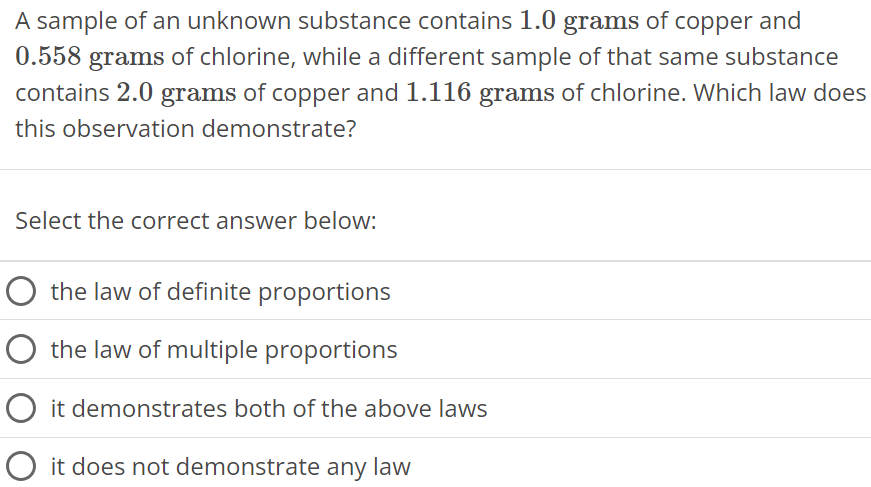A sample of an unknown substance contains 1.0 grams of copper and 0.558 grams of chlorine, while a different sample of that same substance contains 2.0 grams of copper and 1.116 grams of chlorine. Which law does this observation demonstrate? Select the correct answer below: the law of definite proportions the law of multiple proportions it demonstrates both of the above laws it does not demonstrate any law
